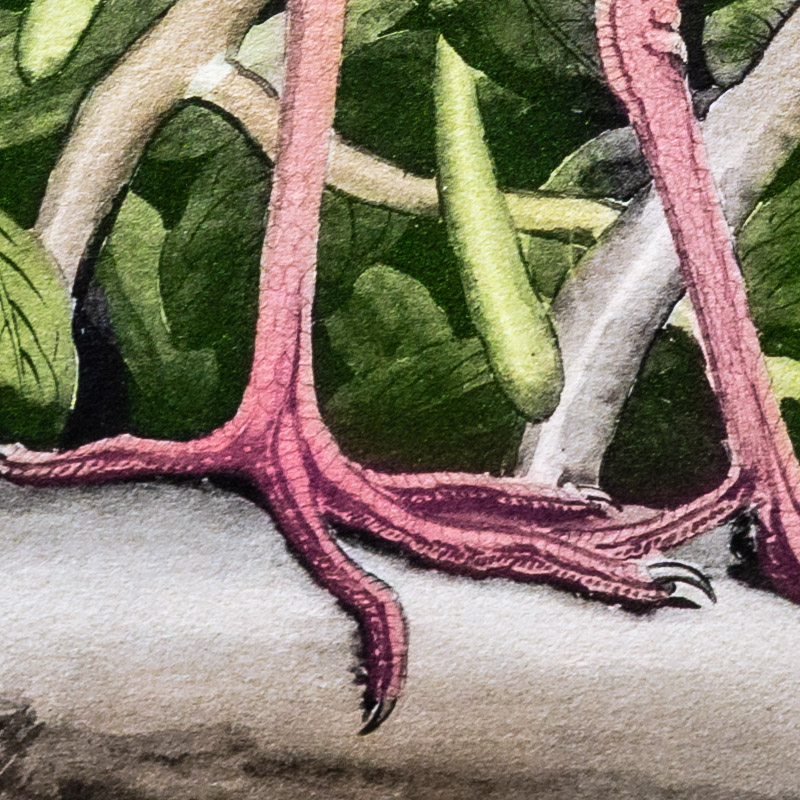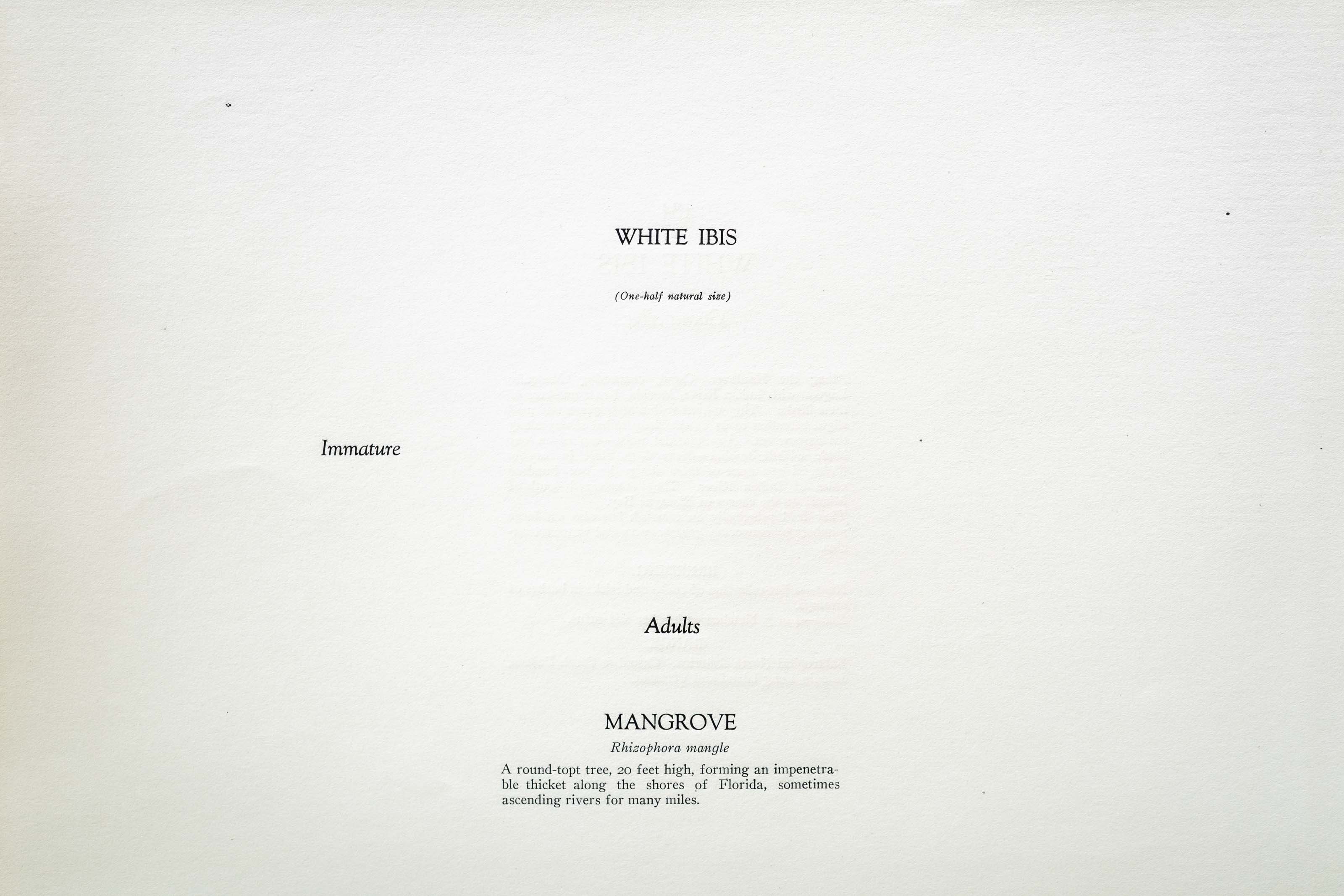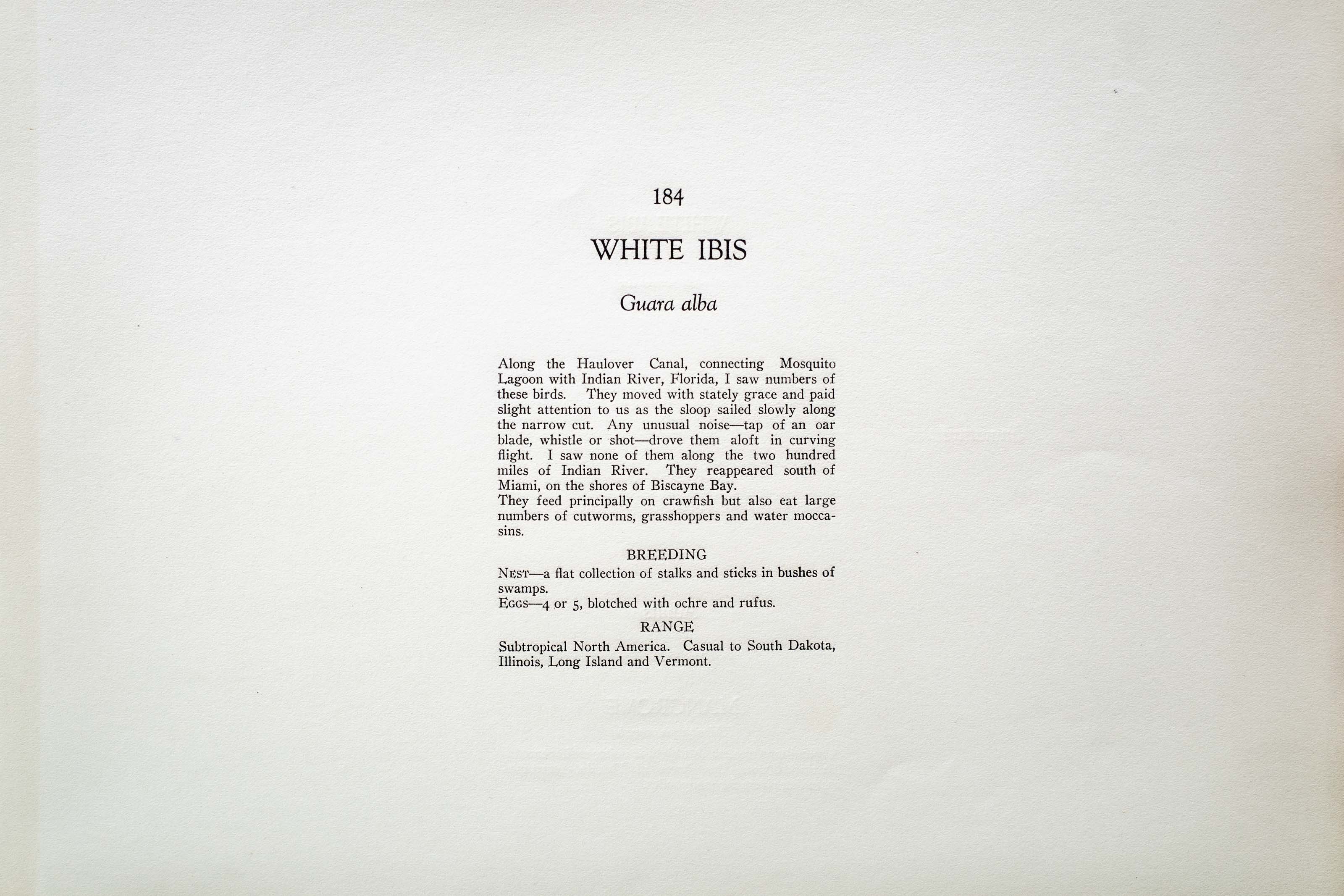






Unknown
1930
3
184
A team of dedicated board members, volunteers, and student interns has published every page in Volume 9. This volume includes 360 images of paintings and lyrical descriptions of birds, now available online for everyone to enjoy anywhere in the world. This is a monumental task. Each volume requires approximately 400 hours to photograph, edit, transcribe, catalog, and publish online. We need your support to complete this work.
If you're tech-savvy, have a good eye, are meticulous with details, and love structured data, please consider volunteering by emailing us at hello@rexbrasher.org.
We encourage all bird lovers and supporters to consider a monetary donation to support our mission to make Rex's work available for everyone. You can provide a one-time or recurring donation online.
Along the Haulover Canal, connecting Mosquito Lagoon with Indian River, Florida, I saw numbers of these birds. They moved with stately grace and paid slight attention to us as the sloop sailed slowly along the narrow cut. Any unusual noise — tap of an oar blade, whistle or shot — drove them aloft in curving flight. I saw none of them along the two hundred miles of Indian River. They reappeared south of Miami, on the shores of Biscayne Bay.
They feed principally on crawfish but also eat large numbers of cutworms, grasshoppers and water moccasins.
NEST — a flat collection of stalks and sticks in bushes of swamps.
EGGS — 4 or 5, blotched with ochre and rufus.
Subtropical North America. Casual to South Dakota, Illinois, Long Island and Vermont.
A round-topt tree, 20 feet high, forming an impenetrable thicket along the shores of Florida, sometimes ascending rivers for many miles.